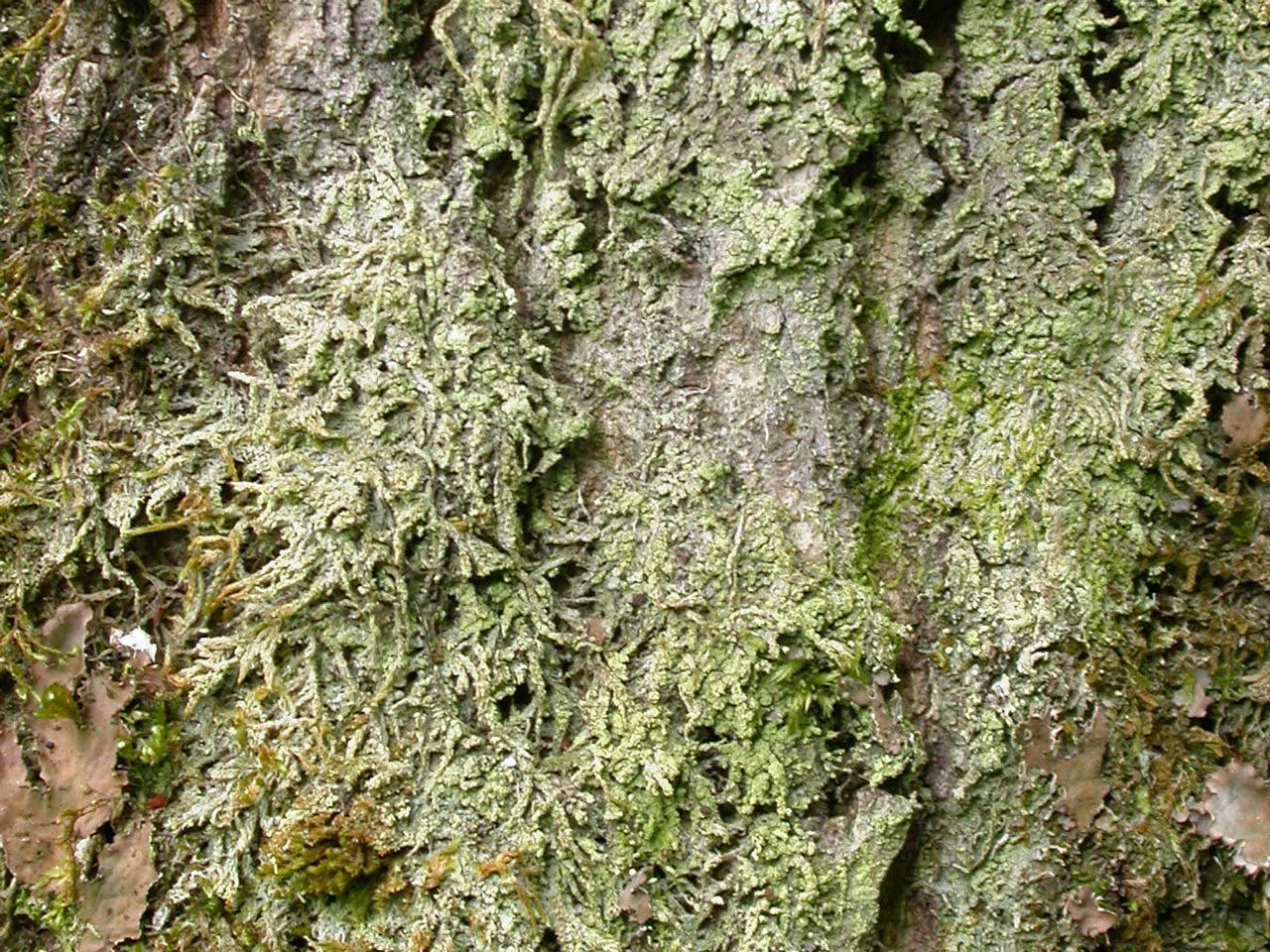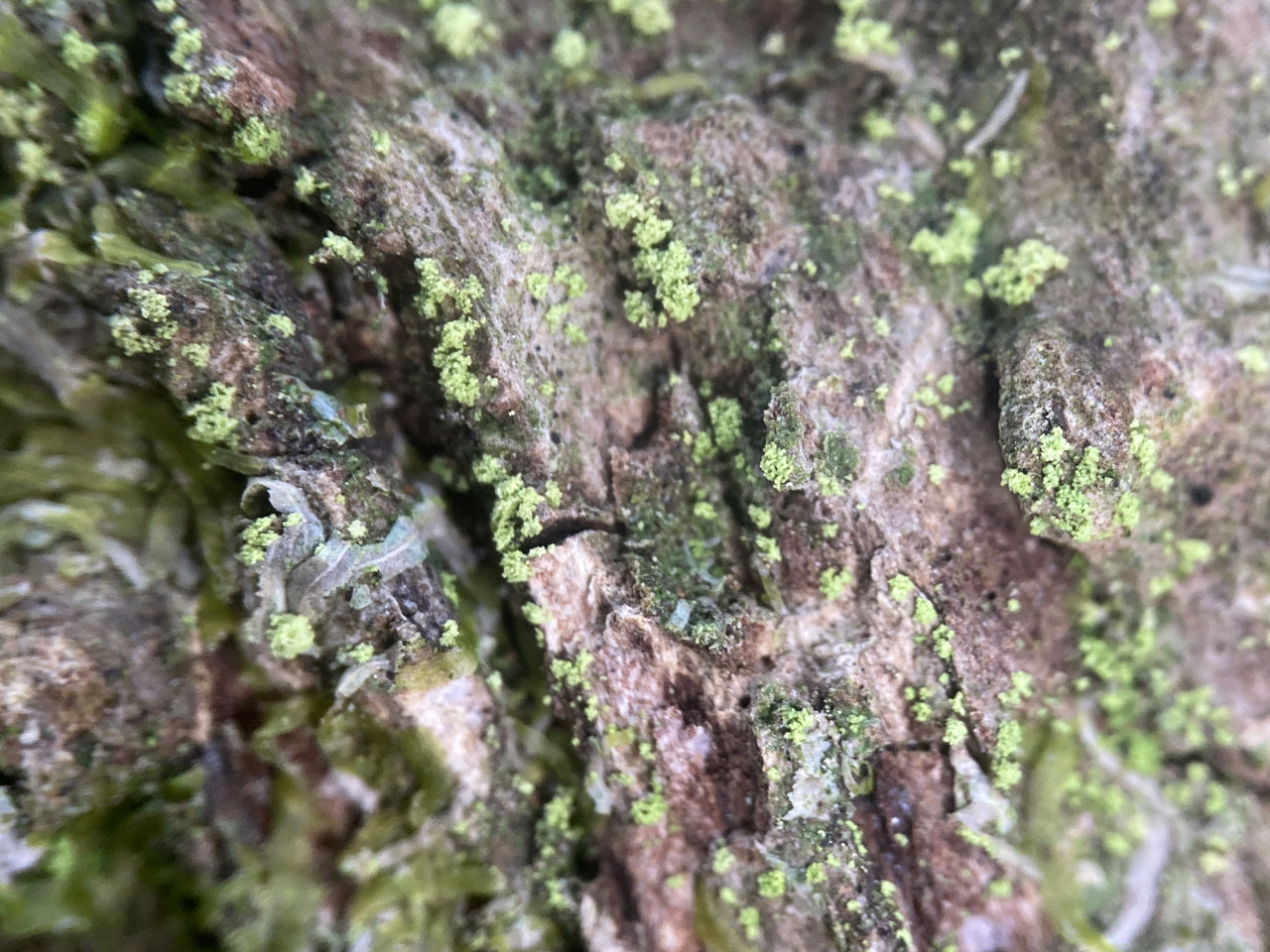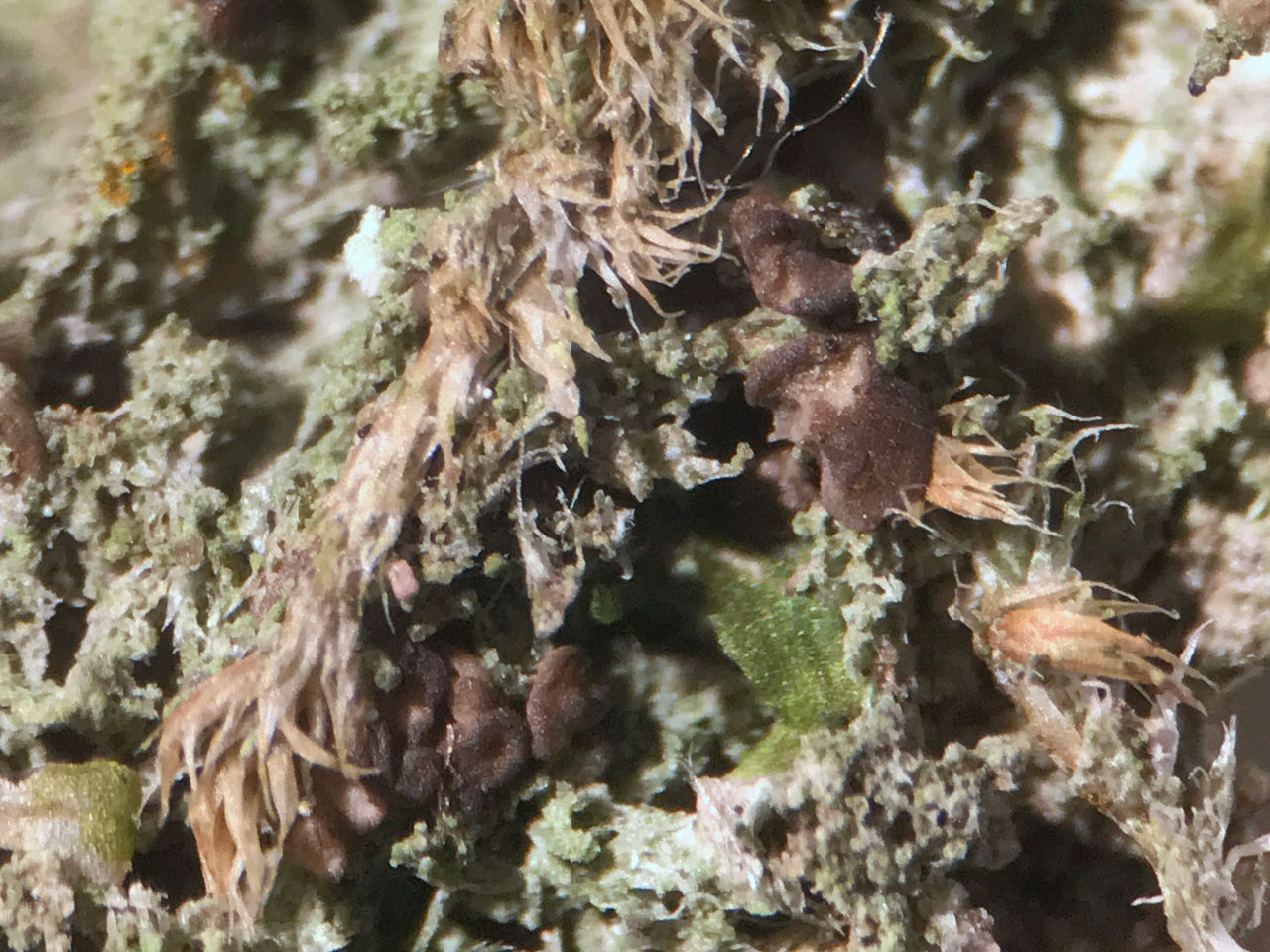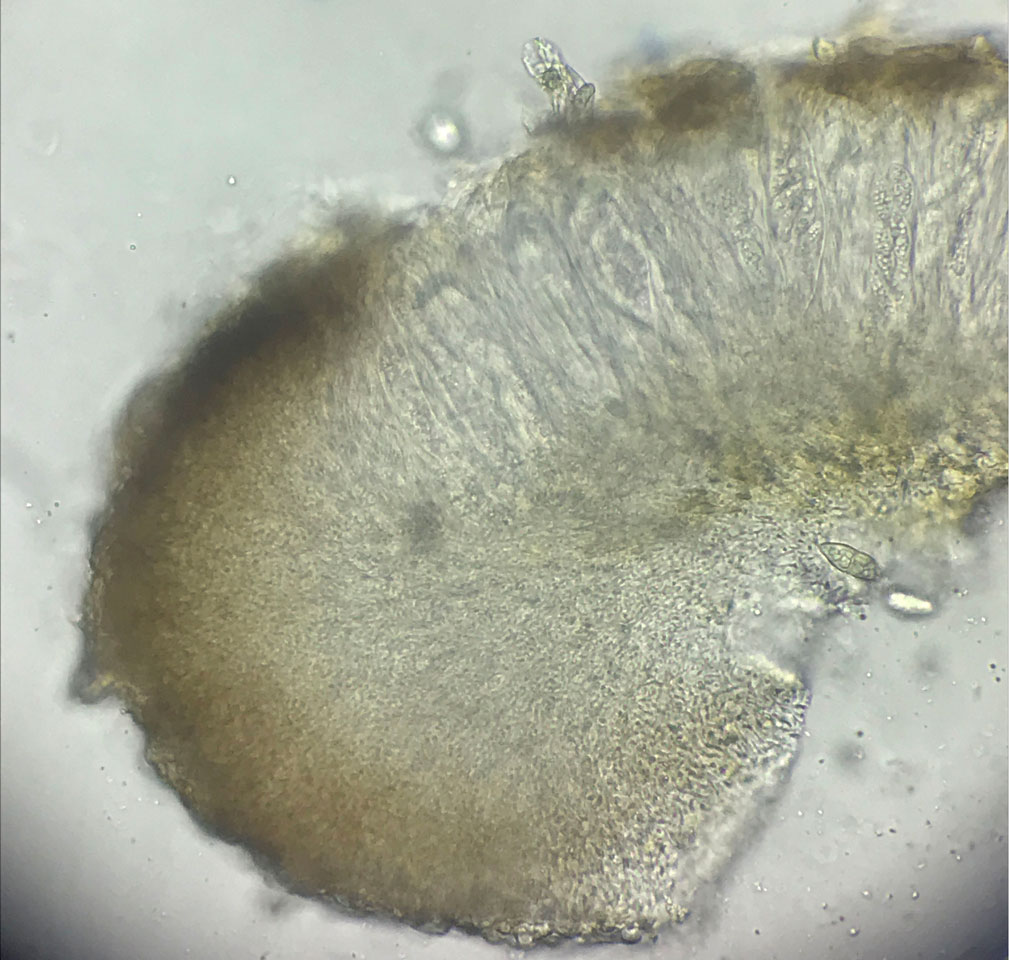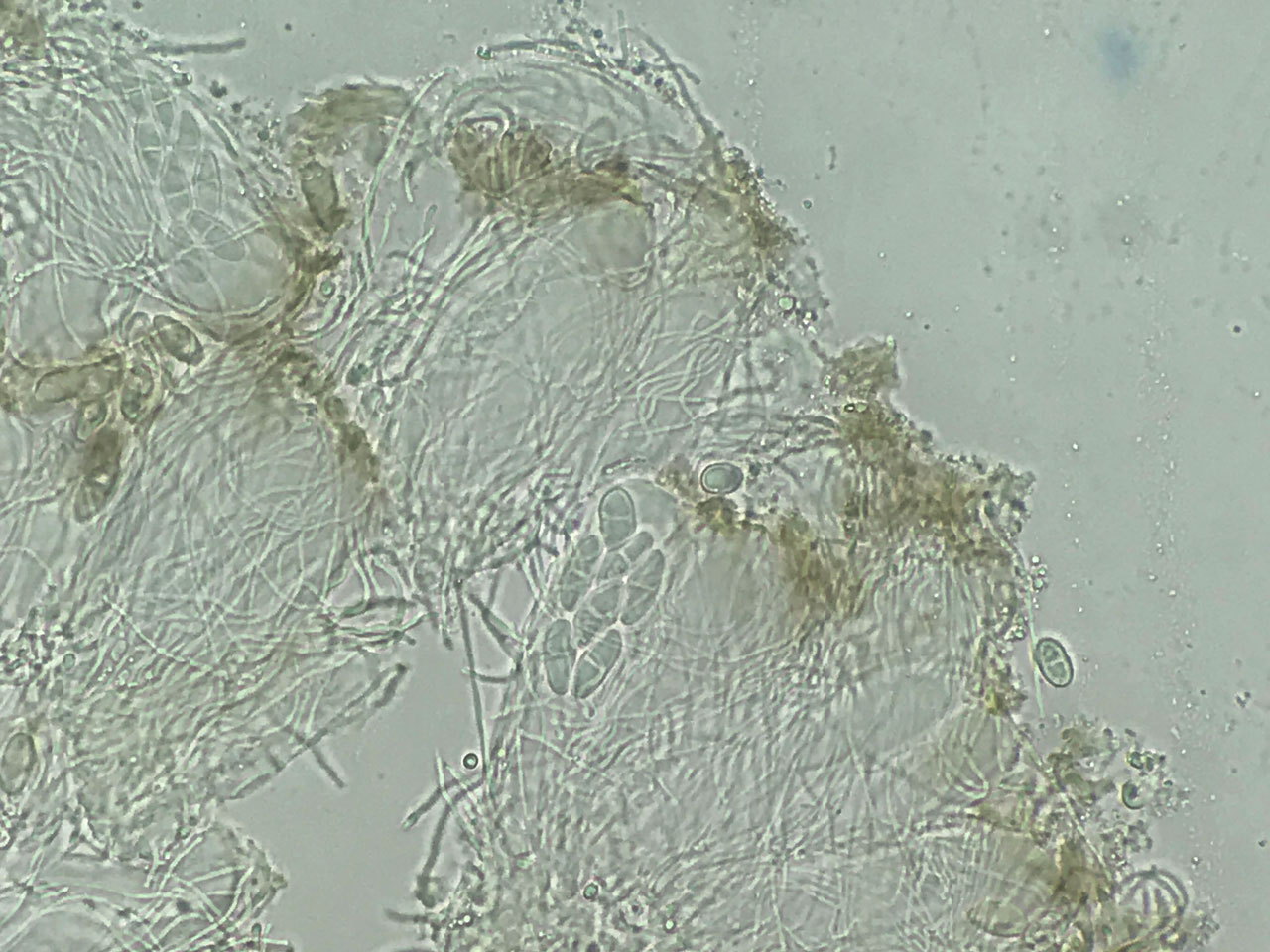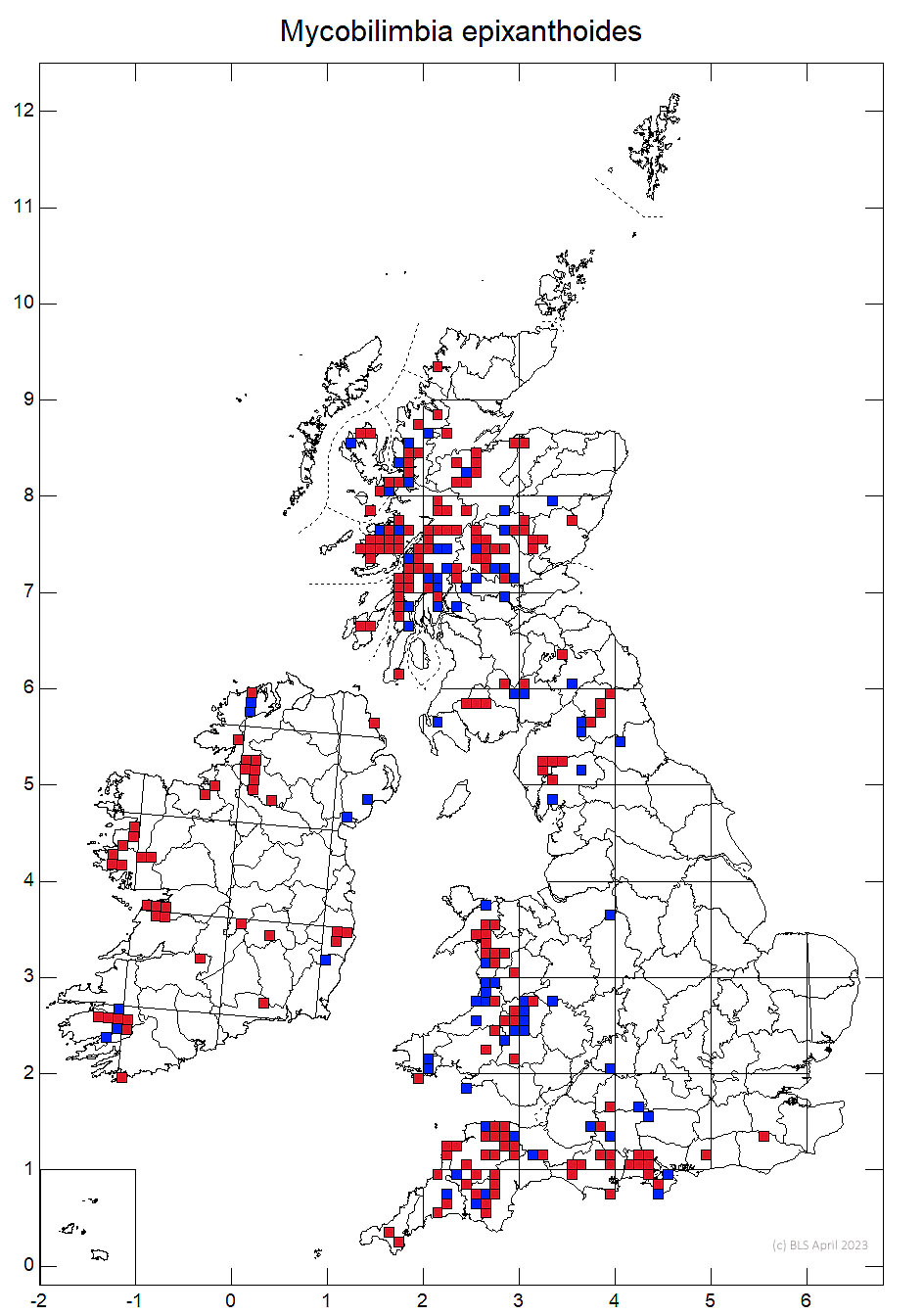An easily overlooked, usually sterile, green sorediate crust found on base rich bark on old trees in humid and shaded habitats in old woodlands. Distinguished by the negative spot tests. Aquacidia viridifarinosa, is found in similar habitats but is bright UV+ orange.
Thallus granular-verrucose, sorediate, pale grey- or yellowish green; soralia effuse, often confluent and thallus more or less leprose. Apothecia often absent, 0.4–1.0 mm diam., weakly to strongly convex, sessile with a constricted base, grey- to red-brown; margin not or weakly prominent, paler than the disc, soon excluded; true exciple colourless outside, pinkish brown within and near hymenium, ca 70 µm thick; hymenium 50–90 µm high, colourless, sometimes with brown spots; subhymenium 30–85 µm high; hypothecium 200–300 µm high, colourless. Ascospores (12.5–) 15–25 × (4–) 4.5–7 µm, (1-) 3-septate, ellipsoidal. Lichen substances not detected by TLC.
Biatora chrysantha is distinguished by a C+ red reaction of thallus and soralia. Aquacidia viridifarinosa, is found in similar habitats but is bright UV+ orange.
Over bryophytes and base-rich bark of mossy trunks of old deciduous trees in ancient woodlands, rarely on mossy rocks in wooded ravines; local. Often found on the same trees as Mycobilimbia sphaeroides but is generally more frequent than this species in woods where both are found but is overlooked as M. epixanthoides usually sterile.

N. & S.W. Britain and the more wooded areas of Ireland.
Cannon, P., Ekman, S., Kistenich, S., LaGreca, S., Printzen, C., Timdal, E., Aptroot, A., Coppins, B., Fletcher, A., Sanderson, N. & Simkin, J. (2021). Lecanorales: Ramalinaceae, including the genera Bacidia, Bacidina, Bellicidia, Biatora, Bibbya, Bilimbia, Cliostomum, Kiliasia, Lecania, Megalaria, Mycobilimbia, Phyllopsora, Ramalina, Scutula, Thalloidima, Toninia, Toniniopsis and Tylothallia. Revisions of British and Irish Lichens 11: 1-82. Link
Text by Neil A Sanderson based on Cannon et al (2021)
